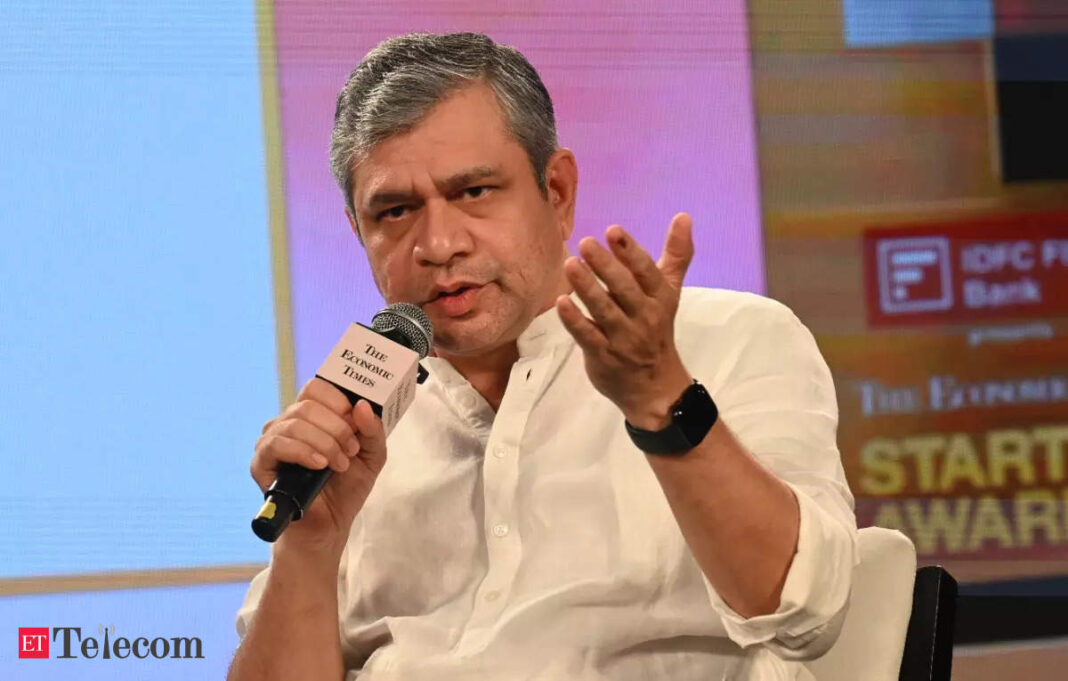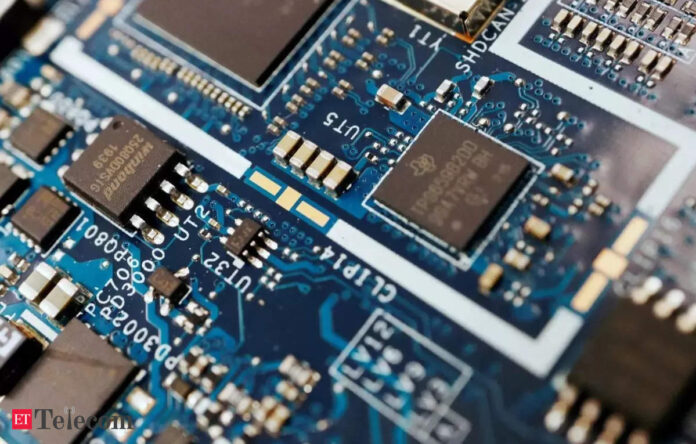In Short:
During a recent discussion, Union Minister Ashwini Vaishnaw highlighted India’s ambitions in semiconductors and AI. He emphasized the successes of digital initiatives like UPI, and how similar frameworks could improve healthcare and agriculture. Vaishnaw noted India’s growing chip design capabilities and the potential of AI in various sectors. He aims for India to be a semiconductor leader, attracting talents and investments.
During a recent fireside chat at the ETSA, Ashwini Vaishnaw, the Union Minister for Railways, Information, Broadcasting, IT, and Electronics, engaged in a discussion with Sruthijith KK about India’s evolving position as a prominent semiconductor hub. The dialogue also covered the nation’s expanding talent pool and the government’s strategic perspective on artificial intelligence (AI). Below are edited highlights from their conversation:
Future Phases in Digital Evolution
SK: You are at the center of significant developments in IT, semiconductors, and digital infrastructure, including Aadhaar, Jan-Dhan accounts, and UPI. What is the next phase in this evolution?
Vaishnaw: The successful establishment of the UPI model encourages us to explore new frameworks in sectors like healthcare, agriculture, and digital credit. The architecture of UPI has proven adaptable, and the National Health Mission, for instance, is leveraging it to create a scalable health solution for the population. In digital lending, we envision a structure that allows significant disbursement of small loans, exemplified by the nearly $20 billion in loans already disbursed, where the average size is around Rs 2,000, outside of the OCEN (Open Credit Enablement Network) framework.
Contributing to a $1 Trillion Digital Economy
SK: Can we attribute the goal of a $1 trillion digital economy to existing IT services and electronics manufacturing?
Vaishnaw: Absolutely. The ongoing expansion in IT services and electronics manufacturing, along with diverse applications of our DPI (digital public infrastructure), will collectively bolster the digital economy target.
Innovation and the Rise of Startups
SK: While we celebrate the success of Indian IT, do we need to accelerate our innovations to produce the next big tech players, such as Google or Nvidia?
Vaishnaw: Significant progress is being made, especially in chip design, which has transitioned from low-value work to a comprehensive value chain in India. We have received approximately 25 applications for chip and SoC design under our semiconductor mission, with 13 showing exemplary progress, attracting venture capital.
The Promise of Generative AI
SK: With the emergence of Gen AI, what opportunities arise for India’s deep tech and AI startups?
Vaishnaw: The interest in various applications—spanning healthcare, agriculture, and pharmaceuticals—suggests that India could become a key AI application service provider globally. Additionally, new methodologies are being developed to reduce the capital required for creating AI models, which amplifies the excitement around harnessing AI for productivity.
Balancing AI Development and Employment
SK: Concerns about AI displacing jobs coexist with the need for India to lead in AI. How do you reconcile these challenges?
Vaishnaw: Our approach is focused on democratizing technology, ensuring its accessibility across startups, academia, and researchers, rather than concentrating it within a few entities. We must be cautious about regulatory measures; we seek an equilibrium that encourages innovation while minimizing societal harm.
Electronics Manufacturing Growth
SK: How has your journey been regarding electronics and semiconductor manufacturing?
Vaishnaw: The current scale of manufacturing in India, exceeding $120 billion, is immensely gratifying. We’re putting great effort into developing the complete ecosystem, identifying eight sub-modules for large-scale production, which is already being finalized.
Upcoming Semiconductor Initiatives
SK: Can you provide insights on when semiconductor facilities will commence operations?
Vaishnaw: The Micron facility is set to begin shipping by early 2025, marking a significant milestone in manufacturing made-in-India memory chips. Additionally, construction of the CG Power facility in Sanand is progressing rapidly, alongside developments in Tata’s ATMP facility in Assam.
Geopolitical Factors and Talent Availability
SK: Is there still considerable momentum among American manufacturers to pivot away from China?
Vaishnaw: Yes, the demand for skilled talent is a critical factor driving this transition. In recent times, we’ve seen advancements in technology previously sourced from other countries, such as packaging, developed by teams in India, showcasing the pace and adaptability we possess.
Focus on Information and Broadcasting
SK: Transitioning to your role in Information and Broadcasting, what can you tell us about recent reforms?
Vaishnaw: We are witnessing the rise of a dynamic creator economy, allowing individuals from diverse backgrounds to gain global recognition. This economy is poised to become a significant aspect of India’s soft power. Furthermore, we aim to leverage technology to create substantial employment opportunities in the media and entertainment sector.
Opportunities within Indian Railways
SK: What opportunities exist for tech startups in the railway sector?
Vaishnaw: There are numerous opportunities, as many innovations have already emerged from our collaborations with startups. For example, applications of AI in railway maintenance and kitchen standards are revolutionizing operations, demonstrating the potential for startups to engage in this transformative journey.
Reflections on Political Frustrations
SK: Given your extensive experience across different roles, do political challenges ever frustrate you?
Vaishnaw: I perceive criticism as an opportunity for improvement. Each initiative we undertake significantly impacts people’s lives, providing immense satisfaction that outweighs any negativity. A constructive outlook enables us to focus on the task at hand while navigating the political landscape.





